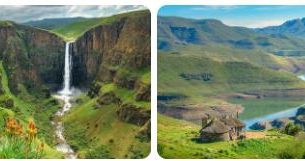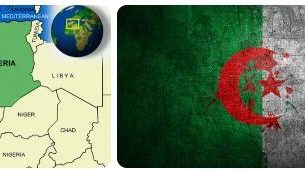Attractions
National parks
The Kala Maloue Reserve is relatively small, but is home to several species of antelope, monkeys and warthogs. Even an elephant trail runs through the wildlife sanctuary; however, the pachyderms never stay here for long.
The 170,000 ha Waza National Park consists of a forest area (open November to March) and large wet meadows, the Yaeres (open February to June). Elephants, giraffes, antelopes, hartebeests, lions, cheetahs and porcupines make their home here. The biodiversity of the bird world is amazing: eagles, cranes, marabous, pelicans, ducks, geese and guinea fowl can be observed at close range.
The Boubandjida National Park is situated on the banks of the Mayo Lidi river in the extreme north of the country. There are other parks and wildlife sanctuaries, but they are not open to visitors.
- Topmbadirectory: Offers information about politics, geography, and known people in Cameroon.
The center and the east
The capital Yaoundé is built on seven hills. The many markets, museums, shops and cinemas provide variety. In the northwest of the city are densely overgrown mountains that rise to 1000 m. On Mont Fébé, which overlooks the city, there is a holiday center with a luxury hotel, nightclub, casino, beautiful gardens and golf course. The altitude makes the climate pleasant. 40 km north of the capital, on the road to Obala, there is a year-round amusement park. The imposing Nightingale Falls of the Sanga Riverare impressive. In the dense forests of this region there are free-roaming gorillas.
The North
Maroua is nestled in the foothills of the Mandara Mountains on the banks of the Mayo River. The market, the African quarters and the banks of the Mayo Kaliao are popular with visitors. The Diamare Museum is an ethnographic museum that also has local handicrafts, jewelry and leather goods for sale. There is also an animal sanctuary near the town (see below).
The idyllic village of Mokolo lies in the middle of a rocky landscape. Rhumsiki is 55 km away. A veritable maze of paths connects the village with the small farms ( Kapsiki ) of the environment. This is where the Kirdi live, an indigenous tribe whose traditions and customs have changed little over the centuries.
Further north is the village of Koza, which is at 1100 m altitude. From here a road leads to the village of Mabas, which offers excellent panoramic views over Nigeria’s Bornou Plains.
The West
Douala, the economic capital of Cameroon, is 24 km from the coast on the left bank of the Wouri. The city is overlooked by Mont Cameroun, which at 4070m is the highest mountain in West Africa. Worth seeing are the cathedral, the harbor and the interesting museum as well as the Wouri Bridge. The shopping streets, the Artisanat National (market with arts and crafts and souvenirs) and the Deido market invite you to browse extensively.
Buéa is a charming town on the slopes of Mont Cameroun. Permission should be obtained from the tourist office before climbing the mountain; however, this is not granted during the rainy season.
Limbé (formerly Victoria) is a picturesque town with a beautiful botanical garden and a “jungle village”. The mountain town of Dschang has a pleasantly cool climate due to its altitude (1400 m). The road south, via N’Kongsamba and Douala, runs through beautiful scenery with stunning valleys and waterfalls.
In Bamenda, in the highlands north of Dschang, there is an interesting museum and arts and crafts market. In Foumban, northeast of Dschang, there are numerous historic buildings from the German colonial era, such as B. the Fon Palace to see. The museum and the market are also worth a visit. The town is a good base for touring the Bamileke region for the colorful Bamoun Festival.
Kribi is a picturesque port and holiday resort south of Douala with arguably Cameroon’s most beautiful beach, Londji Beach. Excursions to the pygmy villages and to the Campo Game Reserve are available. Buffalo, lion and elephant live in the jungles of the interior.
Shopping
Overview
Luxury items are expensive. Decorated pots, jugs, bottles and mugs are popular souvenirs. Large earthenware bowls and other ceramics, mats and rugs made of grass, raffia, camel hair or cotton, embroidered clothing and jewelry are also nice souvenirs. Shop opening times: i. A. Mon-Sat 07.30-18.00.
Nightlife
Introduction
Local entertainers can be seen in many regional cities, especially during the holiday season. In Douala and especially in Yaoundé there are nightclubs and casinos. Most hotels have a casino. In many international hotels, the bars do not close until the last guest has left.
Culinary
Overview
French and Lebanese cuisine are often on the menu, and local specialties are also recommended. There is no shortage of avocados, citrus fruits, pineapples and mangoes. In the south mostly shrimps are offered in all possible variations. In larger cities there are numerous restaurants with good service.
Accommodation
Hotels
There is a good selection of international class hotels in Douala, Yaoundé, Bamenda, Garoua and Maroua. The good hotels (government rating of two or more stars) have air conditioning, swimming pools and sports facilities. Most rooms have a shower attached. These hotels also accept credit cards. Overnight rates do not include meals. Cheaper accommodations are also available. Hotel de Waza, outside Waza National Park to the north, is a camp with two pavilions and single rooms in straw huts. The hotels are usually fully booked early; you should book in advance and insist on a written confirmation. More information from the Ministère du Tourisme (see p.
Camping
Camping is permitted in Boubandjida National Park on the banks of Mayo Lidi.
Culture
Religion
40% Christian, 40% followers of native religions, 20% Muslims.
Social Rules of Conduct
They shake hands to greet each other. Muslims live in large numbers in the north and visitors should respect their customs and traditions. Stone prayer circles may not be entered. Traditional beliefs are found in the countryside, and visitors should also approach them with tact and openness. Photography: In rural areas, you should be careful when taking photos. Permission should always be sought before photographing anyone. Airports, official buildings or military installations should not be photographed. Tipping: Porters and hotel staff receive about 10%. The service charge is usually included in the bill.
Climate
Best travel time
In the south it is very dry from November to February. Some rain falls between March and June; Main rainy season July – October. Temperatures in the north range from cool to very hot. It gets quite cold at night on the Adamaoua Plateau; Rainy season May – October. Regular rainfall on the inland plains.
Country data
Phone prefix
+237
Area (sq km)
475442
Population
26,545,863 (Source: homosociety)
Population density (per square km)
50
Population statistics year
2020
Main emergency number
112


